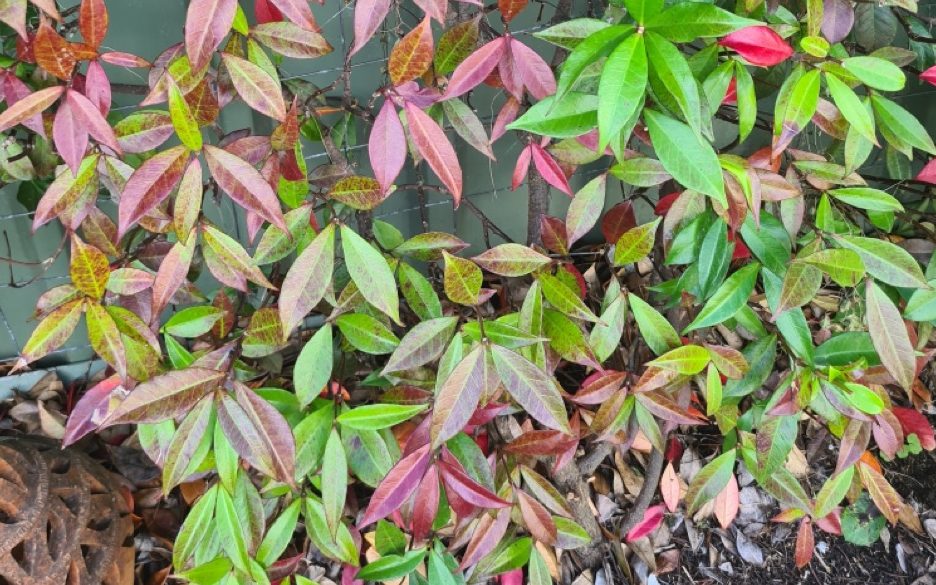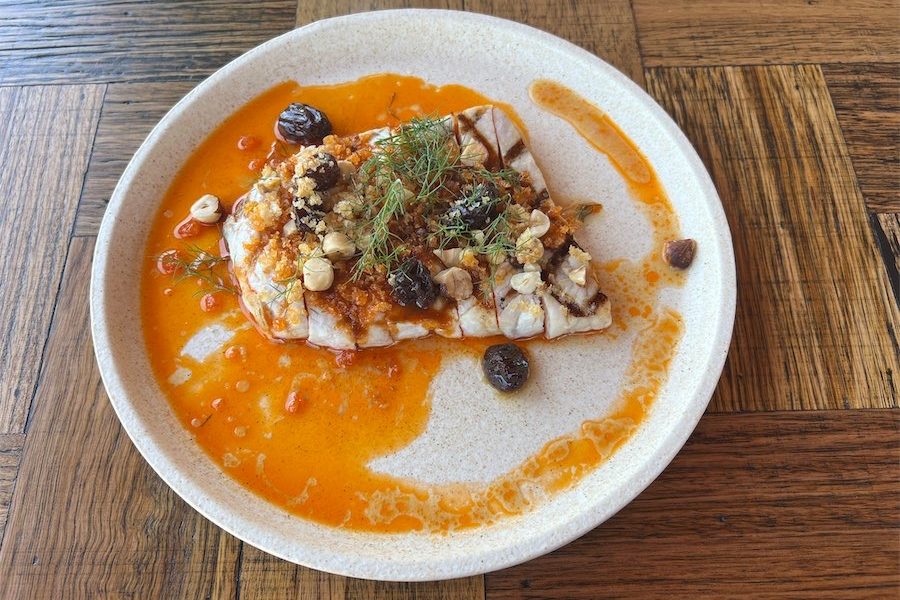
There are many plants unbothered by frost that put on a foliage show in the winter months, writes gardening columnist JACKIE WARBURTON.

ONE of my cold-weather favourites is “Coprosma repens”, a native of NZ that shows as vivid and bright red on a winter’s day.
Its common name is mirror plant and it is a good, small shrub that grows 1.5 metres tall by 1 metre wide.
It likes full sun and can cope with windy, exposed sites but not wet feet, which can cause rot if drainage is not good and pests. They clip well and are a good set-and-forget shrub.
There are a few other favourites that colour up just as well with yellow and burgundy foliage. Look out for them at the nurseries, as there is a new sunset range out.
JUNE is the time to divide and replant rhubarb. It is a wonderful addition to a perennial vegetable garden and can provide shade for seedlings in the warmer months and is slow to spread.
If dividing, use a fork to dig around the clump and remove from the soil. There will be several “crowns” where new plants emerge and they can be cut into big segments with roots for replanting. Use only crowns that are fleshy, plump and are intact with roots.
Dig a deep hole double the size of the crown, add rich organic compost and plant the crown with its neck out of the ground and water well. Water again when new growth appears.
The leaves can be given to the chooks or chopped up and added to the compost. There are two different colours available for growing, red or green with the flavour being the same.
Stems can be “torn” from the base of the plant near the ground and, most importantly, no more than a third of the foliage should be removed from the crown at one time for the longevity of the plant.
I freeze rhubarb in small portions, then heat for breakfast on muesli with nuts and yoghurt for breakfast.
NOT much can be added to the veggie garden this time of year, but peas, spinach and broad beans can be planted. All garden vegetables, such as peas and leafy greens, can have seaweed solution sprayed over the leaves to help build stronger, tougher plants with big frosts coming in the next month. Importantly keep picking greens to encourage new growth.

STAR Jasmine (Trachelospermum jasminoides) is an evergreen climber with fragrance from the flowers in December.
It copes with the cold winters and is popular for small spaces and is generally pest resistant.
As an evergreen, it will drop some small, old leaves and will turn red before dropping. This is nothing to worry about, but if the vine is showing red splotches then this is an indication that the soil is lacking phosphorus, turning the leaves red under stress.
A GOOD spot in the garden for a veggie patch is a space that has at least five to six hours of full sun.
Dig over the area to about spade depth (30 centimetres or so) and no more than a metre wide for good reaching access for picking produce. a
Add lots of organic matter, soak with water and add mulch and soak again. Leave for a few weeks and repeat the process. If the area is a hard clay ground, then it needs plenty of gypsum compost. Manure can also be added.
Mound it all up, cover with mulch and dig over every couple of weeks and keep it weed free. This will be ready for planting when the soil temperature increases in spring.
Winter is a beautiful time in Canberra with the crisp mornings and clear sunny days. The soil is cold and small plants will not be growing, but deep-rooted plants such as trees and shrubs will be working away composting leaves and adding nutrients ready for spring.
jackwar@home.netspeed.com.au
Who can be trusted?
In a world of spin and confusion, there’s never been a more important time to support independent journalism in Canberra.
If you trust our work online and want to enforce the power of independent voices, I invite you to make a small contribution.
Every dollar of support is invested back into our journalism to help keep citynews.com.au strong and free.
Thank you,
Ian Meikle, editor





Leave a Reply